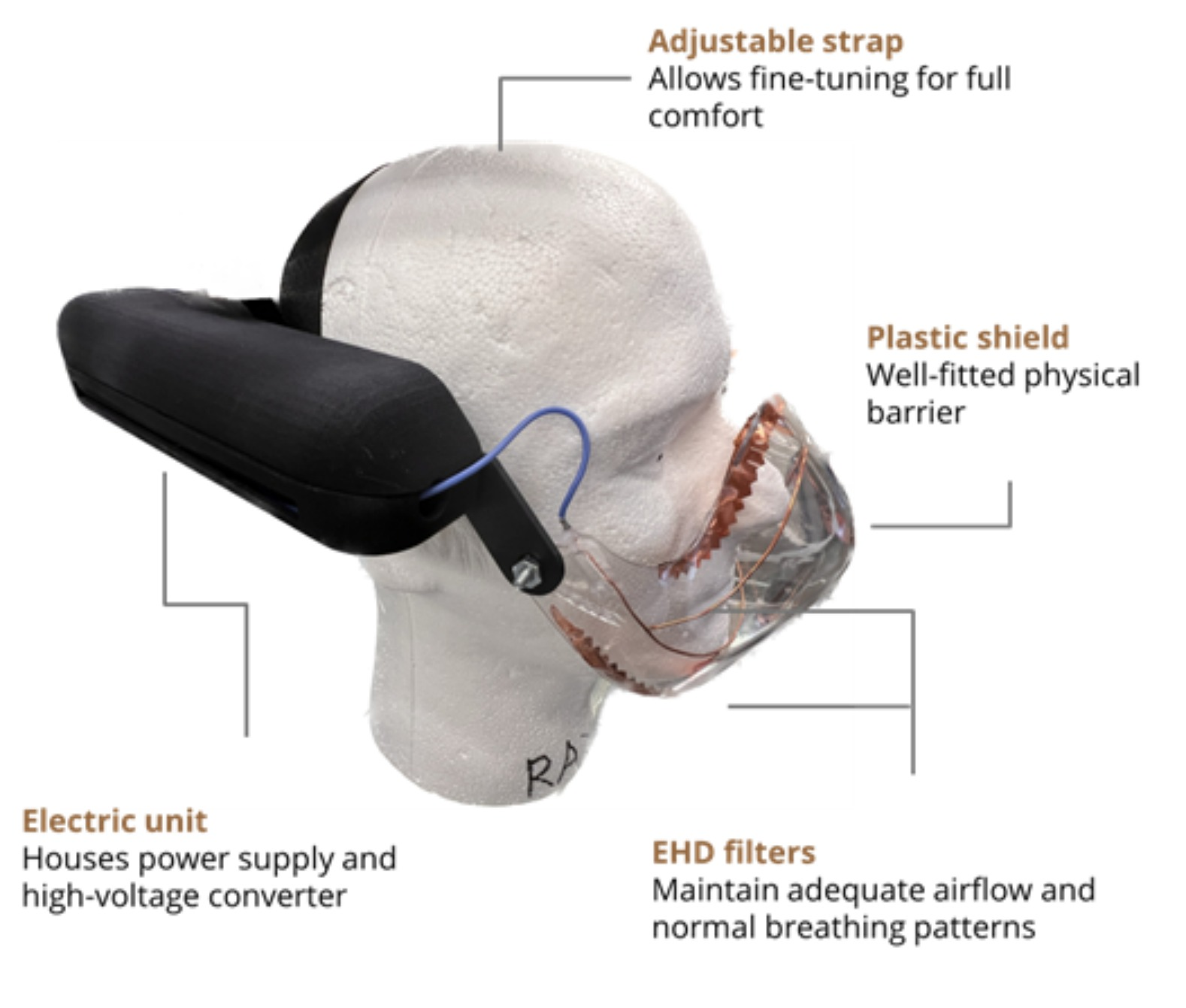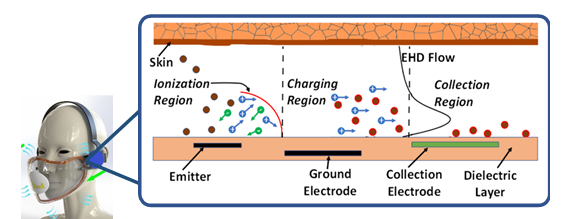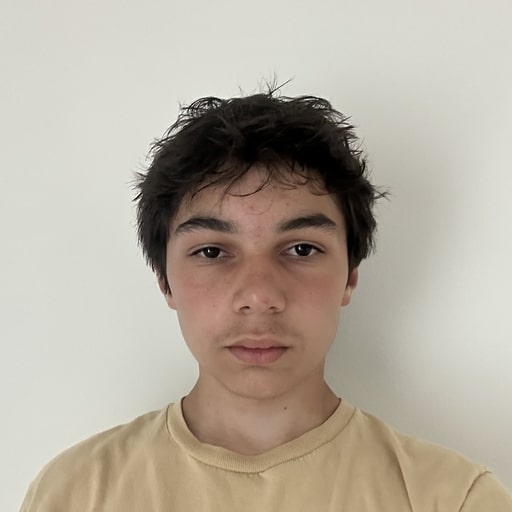The Smart, Individualized, Noncontact, Extended-Wear (SINEW) Mask

Wearable and Safe
Our team believes that healthcare workers should not have to choose between health and comfort. Standard forms of PPE (Personal Protective Equipment) have serious downsides. Surgical masks don’t protect against small particles, leaving healthcare workers vulnerable to contagious diseases. Powered air-purifying respirators offer more protection, but they are loud and cumbersome, making work more demanding. N95 masks must be worn with a tight fit to be effective, which is uncomfortable and often bruises the wearer’s face. Each of the standard options available to healthcare workers sacrifices comfort for protection or compromises safety for wearability.
The SINEW Mask is the solution. It offers both comfort and protection. It does not come in contact with the wearer’s face, meaning that there will be no bruising, chafing, or lack of protection from air gaps. Instead, the SINEW Mask uses electrohydrodynamic (EHD) technology to achieve a high filtration efficiency. This design intentionally leaves an air gap and uses electrostatic filtration to remove particles and provide both wearability and comfort.
Accessible
The SINEW Mask also provides an accessible form of PPE to those working with individuals who are hard of hearing. During the COVID-19 pandemic, the ubiquitous use of opaque face masks has been problematic for those who rely on reading lips and facial expressions to communicate. The SINEW Mask provides a solution for these individuals by making it possible to see the speaker’s facial expressions while still offering protection from harmful airborne particles.

Sustainable and Reusable
The mask design is sterilizable and reusable, making it more environmentally friendly than single-use, disposable alternatives.
The headband is designed to be easy to clean and sterilizable between uses and the power supply is rechargeable, allowing it to be reused. The electrostatic filter media, a thin melamine strip, can be replaced as needed, estimated once per week.
Due to its smaller form factor and absence of moving parts, the resources needed to both manufacture and decontaminate the device are considerably lower than many commercial alternatives. Furthermore, the face shield is made from biodegradable material (poly-butylene-adipate-co-terephthalate). Based on the OSHA data for safety glasses and helmets, we estimate that the SINEW Mask could be worn roughly 8 hours a day for two to three years before disposal, making it a more sustainable solution for healthcare workers who would otherwise be disposing of PPE every single day.
How It Works: Surface Ionization Technology
The SINEW Mask uses electrohydrodynamic (EHD) technology to provide a novel air-pressurizing device that surpasses other comparably effective PPE in size, weight, and comfortability while maintaining a high filtration efficiency.
The filtering takes place along the entire mask perimeter, a few millimeters away from the face, see. Particles and droplets present in the air are removed with electrostatic forces (electrostatic filtration – ESF). The electrostatic collector rapidly charges the particles in the charging region and collects the charged particles on the collection electrode. High ion concentration and the electric field between the emitter and collection electrode result in high particle collection efficiencies. The unique advantage of this design is that it filters out particles without touching the skin of the wearer’s face.

What we're working on: Dielectric Barrier Discharge
Dielectric Barrier Discharge (DBD) is a type of electrical discharge that occurs in a gas between two electrodes separated by a dielectric. When the high-voltage AC power supply is turned on, a strong electric field is created across the dielectric, inducing DBD. This material between the high-voltage electrodes prevents arcing between them, instead confining many ‘micro-discharges’ into a small area. This creates a DBD plasma of ionized gas, where charged particulates influenced by the powerful electric field move toward the oppositely-charged electrodes and are collected on the dielectric.
SINEW Mask Overview Video
Project Updates
Team Leaders

Cameron Urquhart

Cynthia Yu
Power Electronics

Jia Hao Wang

Cameron Urquhart

Zane Hernke

Jan Espelien

Jocelyn He

Karlen Aleksanyan

Shyam Arumugam
Mechanical Design

Jia Hao Wang

Cameron Urquhart

Hanquan Wang

William Hong

Benjamin Dinkelmann

Felix Tse
Technical Writing

Kent Fukuda

Hanquan Wang

Maya Desai
Miscellaneous


